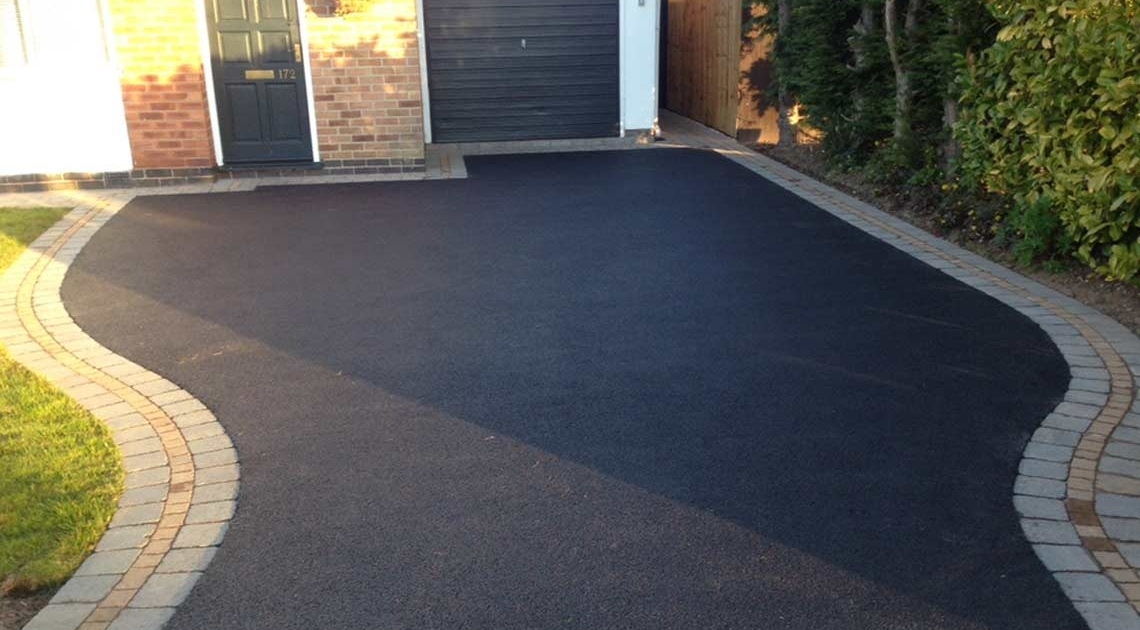
Why Tarmac Resurfacing is Crucial in the UK
In the United Kingdom, maintaining the integrity of roadways and pavements is of paramount importance due to the country's heavy reliance on its road network for both commercial and personal transport.
The UK experiences a variety of weather conditions throughout the year, ranging from heavy rains and frost to high temperatures, all of which take a toll on tarmac surfaces. These climatic variations, combined with the constant wear and tear from vehicles, lead to the formation of potholes, cracks, and general surface degradation. Consequently, tarmac resurfacing has become an essential service to ensure safety, prolong the lifespan of roads, and provide a smooth driving experience.
Tarmac resurfacing involves laying a new layer of tarmac over the existing surface, effectively renewing the road and making it more durable against future wear. This process is not only crucial for maintaining road quality but also for reducing long-term maintenance costs. Poorly maintained roads can lead to increased vehicle repair costs for drivers and potentially higher accident rates. Thus, regular tarmac resurfacing is a proactive measure that benefits both the government and the public.
The Key Stages of Tarmac Resurfacing

Tarmac resurfacing is a comprehensive process that involves several critical steps to ensure a high-quality, durable finish. Below are the main stages of this process:
-
Inspection and Planning: The first step involves a thorough inspection of the existing road surface to assess the extent of the damage and determine the appropriate resurfacing strategy. This phase includes planning the logistics, such as traffic management during the resurfacing process, to minimise disruption.
-
Surface Preparation: Preparing the existing surface is crucial for the success of the new tarmac layer. This stage involves cleaning the area, removing debris, and repairing any potholes or significant cracks. In some cases, planning or grinding down the old surface may be necessary to ensure a level foundation.
-
3Application of Tack Coat: A tack coat, which is a thin layer of bituminous liquid, is applied to the prepared surface. This coat acts as an adhesive, ensuring that the new tarmac layer bonds properly to the existing surface, thereby enhancing the durability of the resurfacing work.
-
Laying the New Tarmac: The new tarmac is then laid using paving machines. It is crucial to ensure that the tarmac is spread evenly and compacted thoroughly to achieve a smooth and level surface. The temperature of the tarmac and the compaction process are closely monitored to avoid future issues such as uneven settling or cracking.
-
Compaction: After laying the tarmac, it is compacted using heavy rollers to ensure it is firmly set. This step is essential to eliminate air pockets and ensure the tarmac has the desired density and strength.
-
Final Inspection and Quality Control: Once the tarmac has been laid and compacted, a final inspection is conducted to ensure that the resurfacing meets the required standards. Any imperfections are corrected, and the surface is checked for smoothness and uniformity.
Why Choose UK Potholes Limited for Your Tarmac Resurfacing Needs
UK Potholes Limited is a leading provider of tarmac resurfacing services in the United Kingdom, renowned for its commitment to quality and customer satisfaction. Here are some reasons why choosing UK Potholes Limited is a wise decision for your tarmac resurfacing needs:
-
Expertise and Experience: With years of experience in the industry, UK Potholes Limited boasts a team of highly skilled professionals who are adept at handling a variety of resurfacing projects. Their expertise ensures that each project is completed to the highest standards, regardless of its complexity or scale.
-
Quality Materials: The company uses only the highest quality materials, ensuring that the resurfaced roads are durable and long-lasting. This commitment to quality means that clients can expect reduced maintenance costs and fewer disruptions over time.
-
Advanced Equipment: UK Potholes Limited employs state-of-the-art equipment and the latest resurfacing techniques to achieve superior results. Their investment in advanced technology not only enhances the efficiency of the resurfacing process but also ensures precision and consistency.
-
Comprehensive Services: Beyond just tarmac resurfacing, UK Potholes Limited offers a wide range of related services, including pothole repairs, road markings, and drainage solutions. This comprehensive approach allows clients to address multiple road maintenance needs through a single, reliable provider.
-
Customer-Centric Approach: The company prides itself on its customer-centric approach, prioritising clear communication and transparency throughout the project. From initial consultation to project completion, clients are kept informed and involved, ensuring their specific needs and expectations are met.
-
Environmental Responsibility: UK Potholes Limited is committed to sustainability and environmentally friendly practices. They utilise eco-friendly materials and processes wherever possible, contributing to the reduction of the environmental impact associated with road maintenance activities.
In conclusion, tarmac resurfacing is an indispensable service for maintaining the UK's road network. By understanding the key stages of the resurfacing process and choosing a reputable company like UK Potholes Limited, road maintenance can be conducted efficiently and effectively, ensuring safety and longevity for the country's infrastructure.
Trending
-
1 Jocko Willink's Inspirational Life & Net Worth
Aaqil Ashraf -
2 How Art Shapes Culture and Reflects Human Experience
Luke Fitzpatrick -
3 Meet Felix Williams and Maria Arthuer: The Parents of World Class Winger Nico Williams
Felix Yim -
4 Kai Cenat's Dad and the Enduring Public Interest
Aaqil Ashraf -
5 London Tube Stations Closed as Workers Stage Strikes
Mihir Gadhvi





Comments